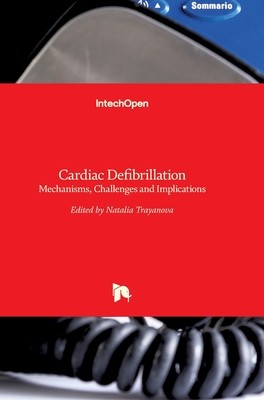
- We will send in 10–14 business days.
- Publisher: IntechOpen
- Year: 2011
- Pages: 264
- ISBN-10: 9533076666
- ISBN-13: 9789533076669
- Format: 17 x 24.4 x 1.6 cm, kieti viršeliai
- Language: English
- SAVE -10% with code: EXTRA
Cardiac Defibrillation (e-book) (used book) | bookbook.eu
Reviews
Description
The only known effective therapy for lethal disturbances in cardiac rhythm is de?brillation, the delivery of a strong electric shock to the heart. This technique constitutes the most important means for prevention of sudden cardiac death. The efficacy of defibrillation has led to an exponential growth in the number of patients receiving implantable devices. The objective of this book is to present contemporary views on the basic mechanisms by which the heart responds to an electric shock, as well as on the challenges and implications of clinical defibrillation. Basic science chapters elucidate questions such as lead configurations and the reasons by which a defibrillation shock fails. Chapters devoted to the challenges in the clinical procedure of defibrillation address issues related to inappropriate and unnecessary shocks, complications associated with the implantation of cardioverter/defibrillator devices, and the application of the therapy in pediatric patients and young adults. The book also examines the implications of defibrillation therapy, such as patient risk stratification, cardiac rehabilitation, and remote monitoring of patient with implantable devices.
EXTRA 10 % discount with code: EXTRA
The promotion ends in 22d.12:32:27
The discount code is valid when purchasing from 10 €. Discounts do not stack.
- Publisher: IntechOpen
- Year: 2011
- Pages: 264
- ISBN-10: 9533076666
- ISBN-13: 9789533076669
- Format: 17 x 24.4 x 1.6 cm, kieti viršeliai
- Language: English English
The only known effective therapy for lethal disturbances in cardiac rhythm is de?brillation, the delivery of a strong electric shock to the heart. This technique constitutes the most important means for prevention of sudden cardiac death. The efficacy of defibrillation has led to an exponential growth in the number of patients receiving implantable devices. The objective of this book is to present contemporary views on the basic mechanisms by which the heart responds to an electric shock, as well as on the challenges and implications of clinical defibrillation. Basic science chapters elucidate questions such as lead configurations and the reasons by which a defibrillation shock fails. Chapters devoted to the challenges in the clinical procedure of defibrillation address issues related to inappropriate and unnecessary shocks, complications associated with the implantation of cardioverter/defibrillator devices, and the application of the therapy in pediatric patients and young adults. The book also examines the implications of defibrillation therapy, such as patient risk stratification, cardiac rehabilitation, and remote monitoring of patient with implantable devices.


Reviews